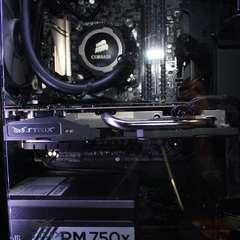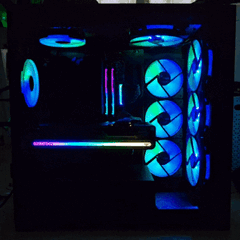-
Posts
32,181 -
Joined
-
Last visited
Contact Methods
-
Steam
Godlygamer23
-
Battle.net
Windows10 #11805
-
Twitch.tv
https://www.twitch.tv/captainchaos57
-
Other
Epic: Godlygamer26
Profile Information
-
Interests
Astronomy, computers, physics, chemistry, etc.
-
Occupation
Quality Engineer
-
Member title
My username has aged poorly
System
-
CPU
AMD Ryzen 5 5600
-
Motherboard
MSI MPG X570 Gaming Plus
-
RAM
16GB Corsair DDR4 Memory @ 3200
-
GPU
EVGA RTX 3070 FTW3 Ultra
-
Case
Fractal Design Define R5
-
Storage
Intel 520 240GB SSD; 2 WD Caviar Blue HDDs(1TB, 1TB); 1 WD Blue M.2 SSD(500GB) ; Seagate Barracuda ST8000DM004-2CX188 8TB HDD; 9TB NAS
-
PSU
Seasonic SS-750KM3 X-Series 750W
-
Display(s)
LG IPS234 LED LCD; Nixeus EDG27240S
-
Cooling
NZXT Kraken x62
-
Keyboard
CM Storm Trigger
-
Mouse
Corsair SCIMITAR PRO
-
Sound
Sound Blaster Z, Beyerdynamic DT 770 Studio 80ohm
-
Operating System
Windows 10 Pro 64-bit
-
Phone
iPhone XR 64GB
Recent Profile Visitors
62,700 profile views
Godlygamer23's Achievements
-
Not sure where you drive, but this is already a thing on the highway essentially in my area(East Coast), because people drive different speeds, based on whether or not it's a company vehicle(speed monitored), what they're comfortable with, etc. Most people in my area are doing 80-90 in a 65MPH zone in both lanes, so any difference in speed forces people to move over, and then back again. So implementing it based on vehicle size, and gross weight is just taking it another step forward. Rigs and other vehicles carrying heavy items(or carrying them in a more precarious way) may naturally drive at a lower rate anyway.
-
Looking for a thorough uninstaller.
Godlygamer23 replied to Robert Morgan's topic in Programs, Apps and Websites
Sometimes you can just delete the files directly(if it an official uninstaller isn't working), including anything generated in your App Data folder. -
The cause of the coil whine may not be the power supply at all, but may be the graphics card.
-
How was it turned on before?
-
First it's important to understand what "System" means in this context, and see how it's related to other programs, if it is at all. Try downloading and using Glasswire to see what is using so much data.
-
My current laptop refuses to update to the new Windows 10
Godlygamer23 replied to BigChungus1009's topic in Troubleshooting
What updates are you trying to install? -
As mentioned above, instead of firing a shotgun from the hip to see what you hit, use a tool such as WinDirStat(what I personally use) or a similar utility to see what is consuming all that space, so you can target your efforts.
-
TRIM is a command sent to the SSD to inform it that the block of data is stale and can be permanently erased. That's all it does. The rest of it is up to the drive itself to manage it. Defragging is bringing files that are broken up back together as much as possible to create as much contingency as possible(least amount of breaks in between). Both SSDs and hard drives benefit from this, but SSDs far less so due to their much lower latency, and in most cases, it's best to just leave the drive operate as it is designed to do - assuming it's programmed properly at a firmware level, that is. Otherwise, avoid using or buying that drive lol. Do not randomly defrag SSDs. Windows will do it as needed. Defragging SSDs on a regular basis consumes writes. The overall percentage of capacity usage is what matters here since the drive still has to manage the data. Partitions make zero difference here.
-
If that were true, then the Optimize Drives utility is largely useless, and any mention of "[number of days] since last retrim" within the program is totally useless information, and is objectively untrue. So therefore, I don't think that happens. Windows does schedule TRIM commands to be sent based on what it considers to be required, but it's unlikely it does it for every single deletion operation. However, if you have objective evidence to the contrary, I'll certainly change my view.
-
Razer fined for their supposedly N95 Zephyr RGB Mask.
Godlygamer23 replied to Mope El Two's topic in Tech News
Here's a review of this product when it first came out: https://arstechnica.com/gadgets/2021/11/review-i-wore-razers-zephyr-n95-mask-for-two-weeks-so-you-dont-have-to/ Turns out it really wasn't N95 certified. -
1.) Did you provide support to the cooler during the tightening process? 2.) Did you tighten the hardware until it couldn't turn anymore with reasonable force? 3.) How much thermal paste did you apply, and did you follow any specific pattern or spread method?
-
How did you ensure the AIO is making proper contact?






















